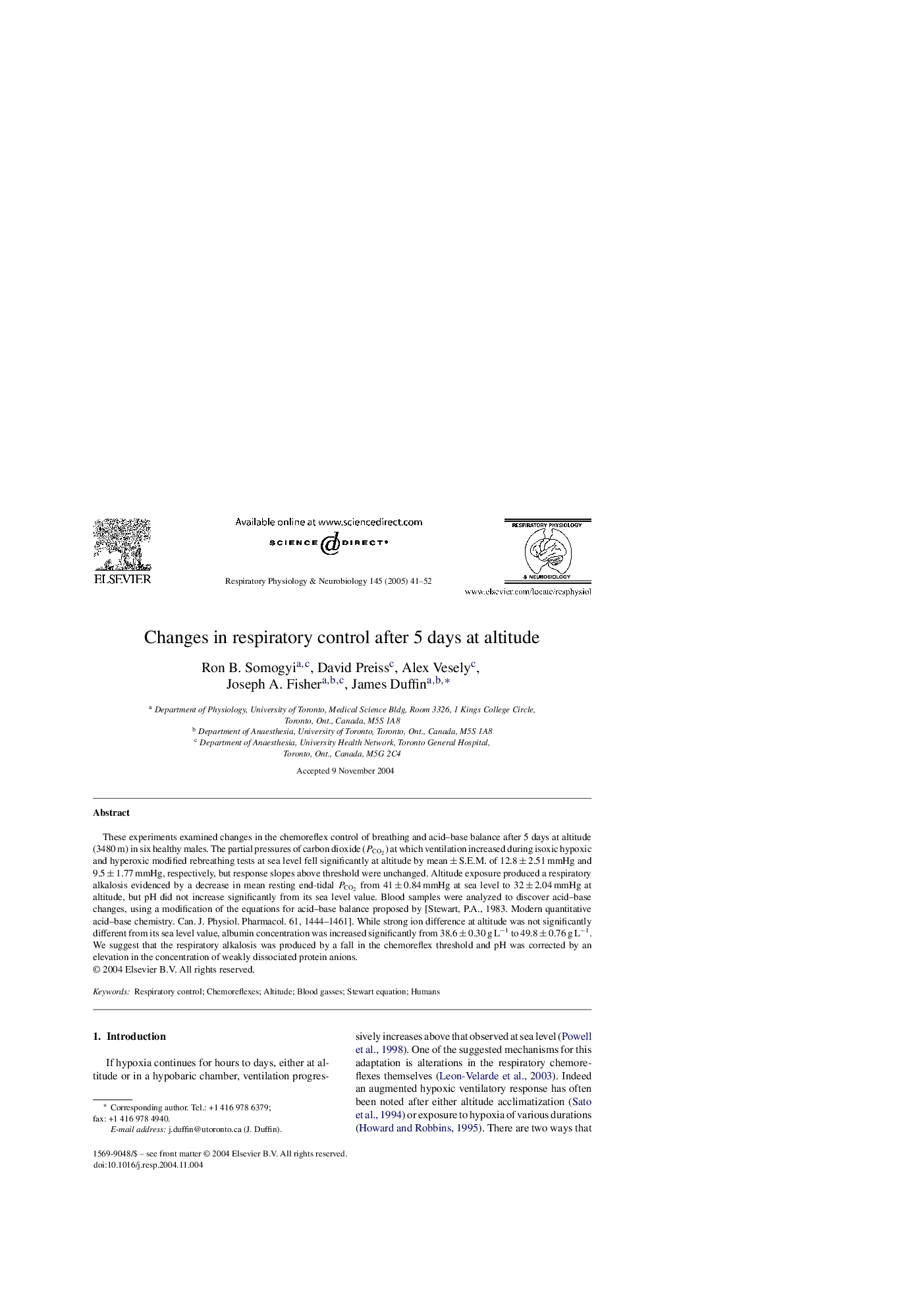| Article ID | Journal | Published Year | Pages | File Type |
|---|---|---|---|---|
| 9152484 | Respiratory Physiology & Neurobiology | 2005 | 12 Pages |
Abstract
These experiments examined changes in the chemoreflex control of breathing and acid-base balance after 5 days at altitude (3480 m) in six healthy males. The partial pressures of carbon dioxide (PCO2) at which ventilation increased during isoxic hypoxic and hyperoxic modified rebreathing tests at sea level fell significantly at altitude by mean ± S.E.M. of 12.8 ± 2.51 mmHg and 9.5 ± 1.77 mmHg, respectively, but response slopes above threshold were unchanged. Altitude exposure produced a respiratory alkalosis evidenced by a decrease in mean resting end-tidal PCO2 from 41 ± 0.84 mmHg at sea level to 32 ± 2.04 mmHg at altitude, but pH did not increase significantly from its sea level value. Blood samples were analyzed to discover acid-base changes, using a modification of the equations for acid-base balance proposed by [Stewart, P.A., 1983. Modern quantitative acid-base chemistry. Can. J. Physiol. Pharmacol. 61, 1444-1461]. While strong ion difference at altitude was not significantly different from its sea level value, albumin concentration was increased significantly from 38.6 ± 0.30 g Lâ1 to 49.8 ± 0.76 g Lâ1. We suggest that the respiratory alkalosis was produced by a fall in the chemoreflex threshold and pH was corrected by an elevation in the concentration of weakly dissociated protein anions.
Related Topics
Life Sciences
Biochemistry, Genetics and Molecular Biology
Physiology
Authors
Ron B. Somogyi, David Preiss, Alex Vesely, Joseph A. Fisher, James Duffin,
